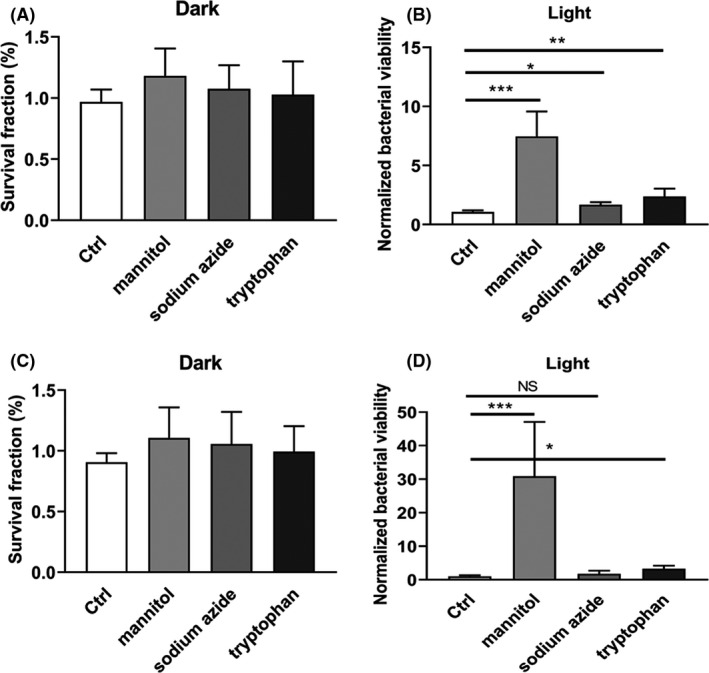Fig. 7.

Effect of ROS scavengers and quenchers on the photodynamic inactivation of S. aureus by HB. S. aureus (5 × 107 CFU ml‐1) was incubated with 100 nM of HB (A and B) or 10 µM of curcumin (C and D) exposed to LED light at a fluence of 0 J cm‐2 (dark) or 9 J cm‐2 (light). A type I scavenger (mannitol, 10 mM), a type II quencher (sodium azide, 1 mM) and a mixed type I‐II quencher (tryptophan, 10 mM) were, respectively, pre‐incubated with the mixture of PS and bacterial suspensions for 30 min prior to illumination. For A and C, the survival fraction was calculated based on the percentage of viable cells in comparison to sham control (PS‐, light‐). For B and D, bacterial viability was normalized against the respective Ctrl group (in the absence of scavenger/quencher) for better visualization and comparisons. Values represent averages of at least triplicate data, and error bars indicate the standard deviation. ***P < 0.001, **P < 0.01, *P < 0.05, NS P > 0.05.
A. Viable number of S. aureus in apple slice treated with 100 nM HB and curcumin photoactivated by 9 J cm‐2 of LED light with wavelength of 460 nm. The treated apple was placed at room temperature for 2 h before bacterial enumeration. The data were normalized against the sham control group (S‐L‒). Representative apple slices without dish covers were shown in inserts.
B. pH values of apple slices in the presence or absence of photodynamic treatment.
C. Total phenol content of apple slices in the presence or absence of photodynamic treatment. S‐L‒, no PS and light; S‐L+, no PS, with light illumination; S + L‒, with PS, no light illumination; S + L+, with PS and light. Values represent averages of at least triplicate data, and error bars indicate the standard deviation. **P < 0.01.
D. Schematic representation of dual‐PS‐mediated aPDI against S. aureus and its application in apple maintenance.
